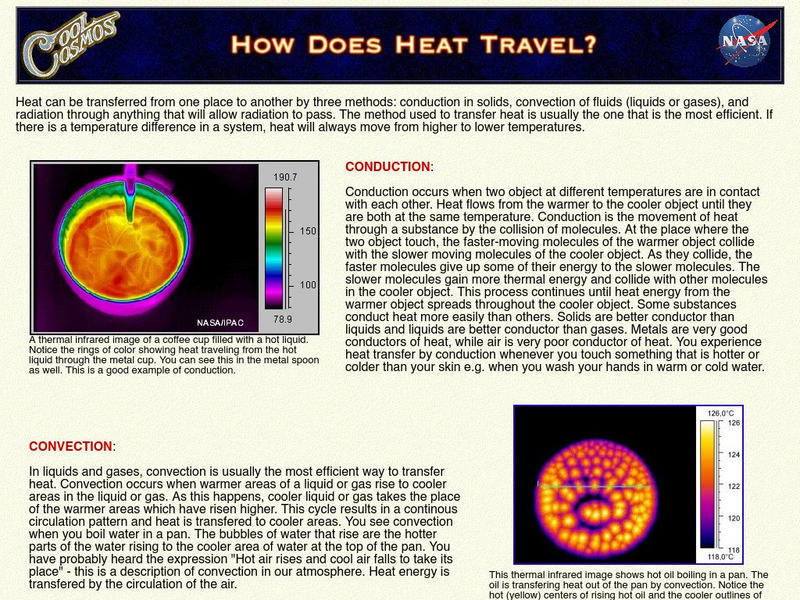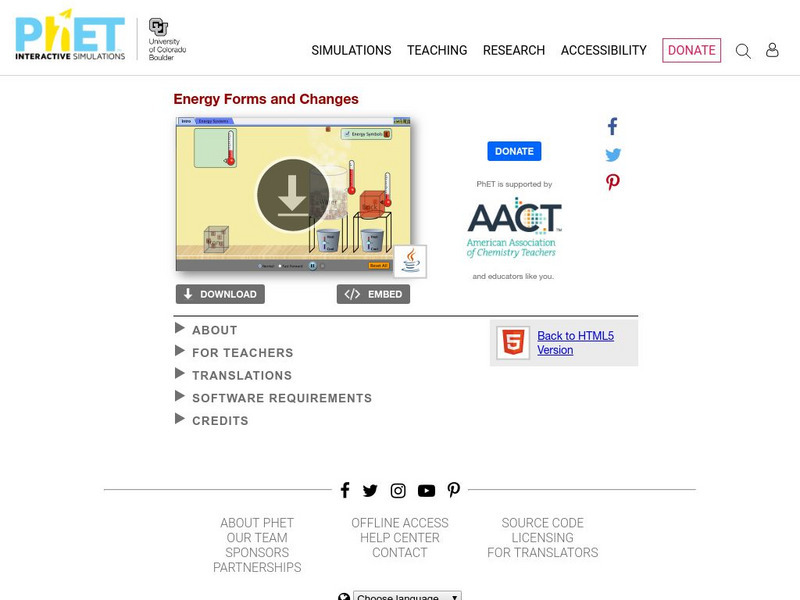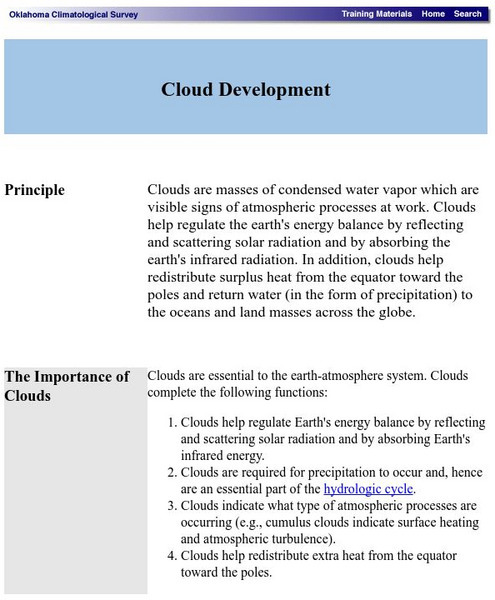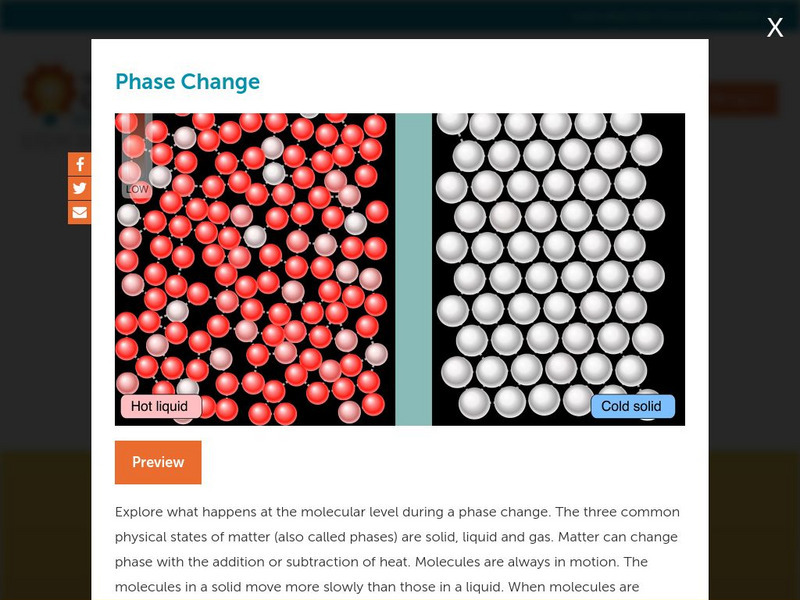California Institute of Technology
Nasa: Cool Cosmos: What Is Heat?
Eight different types of energy that can convert into thermal energy are described. A movement activity and an experiment are included in this overview of thermal energy.
TeachEngineering
Teach Engineering: What's Hot and What's Not?
With the help of simple, teacher-led demonstration activities, students learn the basic physics of heat transfer by means of conduction, convection, and radiation. They also learn about examples of heating and cooling devices, from stove...
Colorado State University
Colorado State Univ.: Heat Transfer Resistance Modeling
This site from the Colorado State University discusses the tranfer of heat by conduction and convection. Discussion centers around the application of these two heat transfer mechanisms to engines. The variables that effect the resistance...
Science and Mathematics Initiative for Learning Enhancement (SMILE)
Smile: Passing the Heat Along
This lesson plan explores the way heat passes--transfers--through various conductors.
Georgia State University
Georgia State University: Hyper Physics: Radiation Cooling of Body
Discusses the means by which the body regulates its temperature. The role of radiation in this process is explained. An equation for calculating the rate at which energy is transferred by radiation is presented. Also, an interactive...
Georgia State University
Georgia State University: Hyper Physics: Heat Convection
Using understandable words and exceptional graphics, this page describes the transfer of energy by means of the convection process. Contains several links to related topics.
Georgia State University
Georgia State University: Hyper Physics: Heat Radiation
The process of energy transfer by radiation is discussed. An equation for calculating the rate of radiative energy transfer is provided. Variables in the equation are explained. An interactive form allows for problem-solving practice...
American Chemical Society
American Chemical Society: Best of Wonder Science: Balloon Bath [Pdf]
An experiment to determine what happens to the air inside a balloon when it is heated or cooled.
National High Magnetic Field Laboratory
Magnet Academy: Deionization
The magnets here at the lab can generate massive amounts of heat. To cool them off, we need massive amounts of water. But first, we have to take the ions out.
Centers for Disease Control and Prevention
Centers for Disease Control: Bam! Your Safety: Keeping Your Cool
Discover ways to keep your body cool and avoid dehydration.
TryEngineering
Try Engineering: Solar Structures
During this lesson, students will construct a passive solar house from everyday items then explore how the sun's energy is used to heat and cool it.
American Chemical Society
Middle School Chemistry: Air, It's Really There
Explore the properties of air, and what happens to air when heated and cooled.
CK-12 Foundation
Ck 12: Chemistry Simulation: Phase Change
[Free Registration/Login Required] Explore how heat and temperature relate to phase changes.
Other
Warmair.com: Programmable Thermostats
The virtues of programmable thermostats are discussed. Includes a section titled "Thermostat Set-back Calculation;" the visitor can enter the normal and an adjusted thermostat setting and an outdoor temperature and view the percent...
Davidson College
Davidson College: Calorimetry:heat of Solution of Sulfuric Acid
An animation to investigate the rates of heating or cooling in a calorimeter. Also, molar enthalpy of solution of sulfuric acid is discovered.
California Institute of Technology
Nasa: Cool Cosmos: How Does Heat Travel?
An explanation, with infrared images, of how heat is transferred from one object to another.
Science Buddies
Science Buddies: Rubber Band Elasticity and Temperature
Many materials expand when heated and contract when cooled. What do you think will happen to the elasticity (stretchiness) of a rubber band when it is heated or cooled to various temperatures?
University of Colorado
University of Colorado: Ph Et Interactive Simulations: Energy Forms and Changes
Explore how heating and cooling iron, brick, and water adds or removes energy. See how energy is transferred between objects. Build your own system, with energy sources, changers, and users. Track and visualize how energy flows and...
State Energy Conservation Office-Texas
State Energy Conservation Office: Renewable Energy Guide for Buildings [Pdf]
A basic guide for ways to be more energy-efficient and to use more renewable energy sources in a building. These include methods of reducing heat or cool air loss, ways of harnessing solar energy, and using the wind for ventilation.
State Energy Conservation Office-Texas
State Energy Conservation Office: Renewable Energy for the Home [Pdf]
Discusses different ways to heat and cool a home, and perform a variety of tasks, using renewable energy sources. Examples include window shades, a solar water heater, solar-powered toys, etc.
University of Sydney (Australia)
Thermal Physics Module/heat Transfer 1 [Pdf]
The first of two pages discussing the different forms of thermal energy transfer. Equations expressing the rate of energy transfer by each of the methods are provided and discussed.
Other
Applied Thermodynamics: Heat Transfer
Heat transfer, rates of heat exchange,conduction, radiation and convection are defined and discussed at this site from Applied Thermodynamics. Well illustrated.
Oklahoma Mesonet
Oklahoma Climatological Survey: Cloud Development
This site explores the importance of clouds and how clouds are formed. Content details common atmospheric cooling mechanisms and atmospheric stability.
Concord Consortium
Concord Consortium: Stem Resources: Phase Changes
This activity reviews of states of matter, then relates them to atomic movement as it is affected by attractions between atoms and the addition of energy. Latent heat and evaporative cooling are also topics covered. Multiple-choice and...



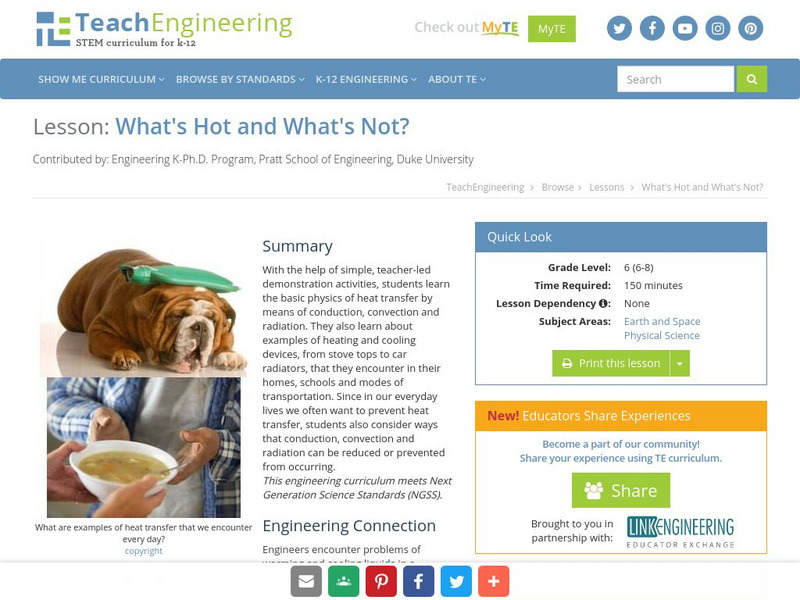



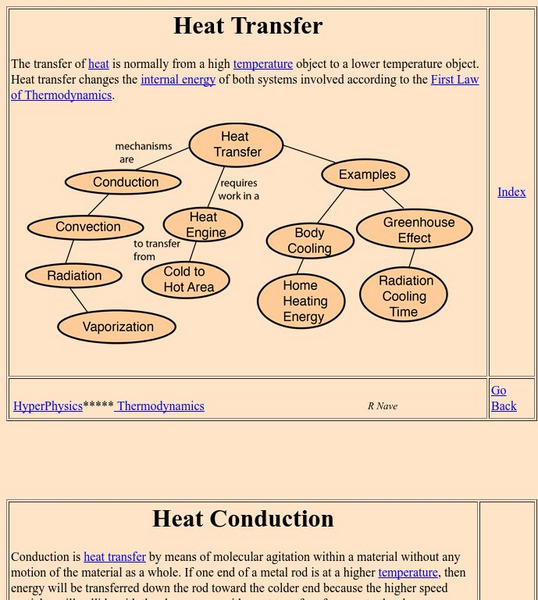
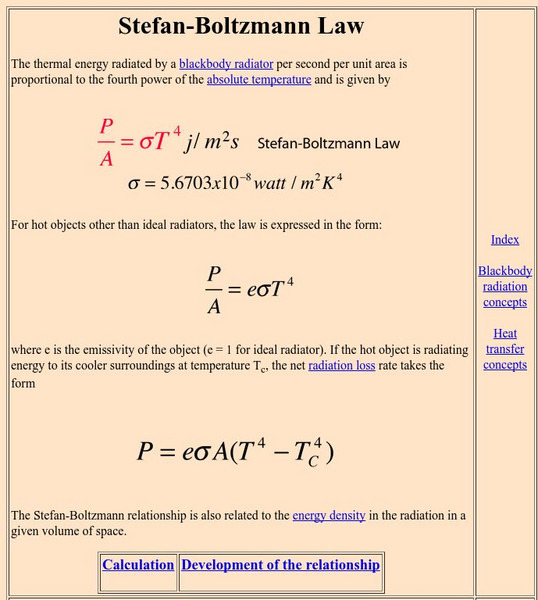
![American Chemical Society: Best of Wonder Science: Balloon Bath [Pdf] Activity American Chemical Society: Best of Wonder Science: Balloon Bath [Pdf] Activity](https://d15y2dacu3jp90.cloudfront.net/images/attachment_defaults/resource/large/FPO-knovation.png)




